
- The Architectural Genius of Antoni Gaudí in the Sagrada Familia
- Exploring the Symbolism Behind the Sagrada Familia's Facades
- A Visitor's Guide to the Sagrada Familia: What You Need to Know
- The History and Construction Timeline of Barcelona's Sagrada Familia
- Why the Sagrada Familia is a UNESCO World Heritage Site
- Experiencing the Spiritual Significance of the Sagrada Familia
The Sagrada Familia stands as a testament to the genius of architect Antoni Gaudí, captivating millions of visitors each year with its intricate designs and towering spires. This iconic basilica, still under construction after more than a century, embodies a blend of Gothic and Art Nouveau styles, making it a unique symbol of Barcelona's architectural heritage.
Known as The Fascinating Sagrada Familia: Barcelona's Iconic Masterpiece, this remarkable structure not only showcases Gaudí's innovative vision but also reflects the deep cultural and spiritual values of the city. Visitors are drawn to its stunning facades and rich symbolism, making it a must-see destination on any trip to Barcelona.
The Architectural Genius of Antoni Gaudí in the Sagrada Familia
Antoni Gaudí's architectural genius is profoundly evident in the Sagrada Familia, where every element serves both aesthetic and functional purposes. His use of natural forms inspired by the surrounding landscape allows the basilica to blend harmoniously with its environment. The integration of light and space creates an ethereal atmosphere, enhancing the spiritual experience for visitors.
One of the most striking features of the Sagrada Familia is its innovative structural techniques. Gaudí employed hyperbolic paraboloids and catenary curves, which contribute to the basilica's unique silhouette and structural integrity. This meticulous attention to detail not only reinforced the building's stability but also added a layer of visual complexity that challenges traditional architectural norms.
Moreover, Gaudí's dedication to symbolism in the Sagrada Familia is unmatched. Each façade tells a different story, filled with intricate carvings and sculptures that depict biblical scenes and themes. Key characteristics include:
- The Nativity Façade: Celebrating the birth of Christ with vibrant imagery.
- The Passion Façade: A stark contrast, illustrating the suffering and sacrifice of Jesus.
- The Glory Façade: Representing the resurrection and the path to God.
In summary, the Sagrada Familia is not merely a building but a canvas of artistic innovation that showcases Gaudí's visionary approach to architecture. His ability to harmonize form, function, and spirituality continues to inspire architects and artists around the globe, making the basilica a profound emblem of creativity and dedication.
Exploring the Symbolism Behind the Sagrada Familia's Facades
The Sagrada Familia features three distinct facades, each rich in symbolism and artistic expression. The Nativity Façade celebrates the birth of Jesus, adorned with intricate sculptures of flora and fauna, embodying the joy of creation. In contrast, the Passion Façade presents a stark and somber depiction of Christ’s crucifixion, using sharp lines and minimalist forms to evoke a sense of suffering and sacrifice.
Furthermore, the Glory Façade represents the resurrection and eternal life, designed to be the main entrance to the basilica. This facade is characterized by its grandiosity and light, symbolizing the connection between heaven and earth. Each facade serves as a narrative thread, weaving together the themes of birth, sacrifice, and salvation, inviting visitors to reflect on their spiritual significance.
Gaudí’s incorporation of natural elements into these facades is particularly noteworthy. For example, the sculptures on the Nativity Façade are inspired by nature, reflecting Gaudí's belief that art should emulate the organic forms found in the world around us. This approach not only enhances the visual appeal but also reinforces the message of divine creation.
In summary, the facades of the Sagrada Familia are not merely decorative; they are integral to understanding Gaudí's profound vision. Through their intricate details and powerful symbolism, these facades invite visitors to explore deeper themes of faith, life, and the natural world, making the Sagrada Familia a true masterpiece of spiritual and artistic expression.
A Visitor's Guide to the Sagrada Familia: What You Need to Know
Visiting the Sagrada Familia is a unique experience that requires some preparation. To make the most of your visit, consider the following tips that will enhance your journey through this architectural marvel:
- Book Tickets in Advance: To avoid long lines, purchase your tickets online ahead of time.
- Choose the Right Time: Early morning or late afternoon visits often provide a quieter atmosphere.
- Guided Tours: Consider joining a guided tour to gain deeper insights into Gaudí's vision and the basilica's history.
As you explore, keep an eye out for Gaudí's innovative use of light inside the basilica. The stained glass windows cast vibrant colors that change throughout the day, creating a mesmerizing effect. This interplay of light and architecture is one of the key features that makes the Sagrada Familia a truly captivating site.
Additionally, the Sagrada Familia offers various facilities to enhance your experience:
| Facility | Description |
|---|---|
| Audio Guides | Available in multiple languages to provide context and detail about the basilica. |
| Gift Shop | Souvenirs and books related to the Sagrada Familia are available for purchase. |
| Cafeteria | Relax and enjoy a light meal or snack before or after your visit. |
Remember to take your time exploring the intricate details of the Sagrada Familia. Each corner reveals a new story, from the carvings on the facades to the breathtaking interiors. Engaging with these elements will deepen your appreciation for Gaudí's masterpiece and the cultural significance it holds in the heart of Barcelona.
The History and Construction Timeline of Barcelona's Sagrada Familia
The history of the Sagrada Familia begins in 1882 when the first stone was laid under the direction of architect Francisco de Paula del Villar. However, it was in 1883 that Antoni Gaudí took over the project, reimagining it with his unique vision. His initial plan transformed the church into a grand basilica that would take decades, if not centuries, to complete, as he believed in the expression of faith through architecture.
Construction progressed slowly, especially during the Spanish Civil War, when many of Gaudí's original plans and models were destroyed. Despite these setbacks, work continued intermittently, with various architects and craftsmen contributing to the project. Today, the Sagrada Familia is estimated to be completed by 2026, marking the centenary of Gaudí's death.
Throughout the years, several key milestones have marked the timeline of construction:
- 1882: Groundbreaking ceremony and initial plans laid out.
- 1891: The first stone of the Nativity Façade completed.
- 1914: The completion of the crypt, an essential component of Gaudí's design.
- 2026: Expected completion date of the basilica, coinciding with Gaudí's 100th anniversary.
The ongoing construction of the Sagrada Familia not only reflects Gaudí's innovative techniques but also embodies the spirit and resilience of Barcelona. Each phase of this monumental project has contributed to its rich narrative, making it a living testament to the city’s artistic heritage and a beacon of faith that continues to inspire visitors worldwide.
Why the Sagrada Familia is a UNESCO World Heritage Site
The Sagrada Familia was inscribed as a UNESCO World Heritage Site in 2005 due to its outstanding universal value and unique architectural style. As a remarkable example of Modernisme, it showcases Gaudí's revolutionary approach to design, which integrates natural forms and structures that reflect the surrounding environment. This innovative blend of Gothic and Art Nouveau elements not only redefined architectural conventions but also reinterpreted the relationship between nature and spirituality.
Another significant reason for its UNESCO designation lies in the basilica's deep cultural and spiritual significance. The Sagrada Familia is not just an architectural marvel; it embodies the religious aspirations of its creator and the community. Every aspect of the basilica, from its facades to its interiors, conveys profound symbolic meanings and narratives, making it a key representation of Catalan identity and faith.
Moreover, the construction of the Sagrada Familia is a continuous process that reflects evolving artistic practices and societal values. Despite being started in the 19th century, the ongoing work demonstrates a commitment to preserving Gaudí’s original vision while incorporating modern techniques and materials. This living project symbolizes the rich cultural heritage and the innovative spirit of Barcelona, reinforcing its status as a UNESCO World Heritage Site.
Lastly, the Sagrada Familia serves as an important educational resource. It attracts scholars, architects, and art enthusiasts from around the globe, facilitating discussions about architecture, conservation, and urban development. As a UNESCO site, it is recognized not only for its artistic significance but also for its role in advancing knowledge and understanding of architectural heritage on a global scale.
Experiencing the Spiritual Significance of the Sagrada Familia
Experiencing the spiritual significance of the Sagrada Familia is akin to embarking on a journey through faith and artistry. As visitors step inside this magnificent basilica, they are often enveloped by a profound sense of peace and inspiration. The interplay of light filtering through the vivid stained glass windows not only illuminates the intricate details of Gaudí's design but also evokes a sense of divine presence, inviting reflection and contemplation.
The harmonious blend of architecture and spirituality can be felt through various elements, such as:
- The towering columns: Resembling trees, they create a natural canopy, enhancing the feeling of being in a sacred space.
- The serene ambiance: The thoughtful arrangement of light and shadow fosters a tranquil atmosphere perfect for personal reflection.
- The spiritual symbolism: Each sculpture and carving represents biblical narratives, allowing visitors to engage with the stories of faith deeply.
Moreover, the Sagrada Familia serves as a focal point for spiritual gatherings and celebrations. Throughout the year, many religious events take place here, reaffirming its role as a vibrant center of faith within the community. The basilica stands not only as a monument of architectural brilliance but also as a living testament to the enduring spirit of those who seek solace and inspiration within its walls.
Ultimately, the Sagrada Familia is a powerful reminder of the connection between art and spirituality. Through Gaudí's visionary design, this basilica invites visitors to explore their own beliefs and experiences, making each visit a unique and personal pilgrimage. The profound messages embedded within its structure resonate with people from all walks of life, further solidifying its status as a masterpiece of both cultural and spiritual significance.
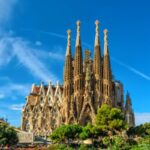 Visit the Famous Sagrada Familia in Barcelona
Visit the Famous Sagrada Familia in Barcelona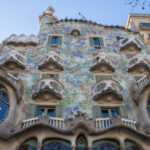 Cost to Build Casa Batlló in Barcelona Not Available
Cost to Build Casa Batlló in Barcelona Not Available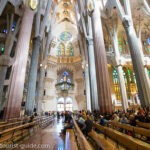 Visiting Hours for Sagrada Familia
Visiting Hours for Sagrada Familia The Marvelous Architecture: The Sagrada Familia in Barcelona Designed by Gaudí
The Marvelous Architecture: The Sagrada Familia in Barcelona Designed by Gaudí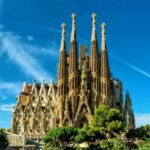 Sagrada Familia: A Spectacular Marvel in the Heart of Barcelona
Sagrada Familia: A Spectacular Marvel in the Heart of BarcelonaIf you want to know other articles similar to The Fascinating Sagrada Familia: Barcelona's Iconic Masterpiece you can visit the category WHERE YOU CAN GO.
Deja una respuesta

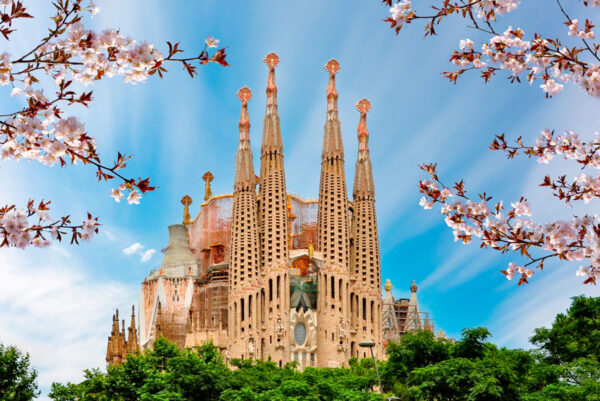
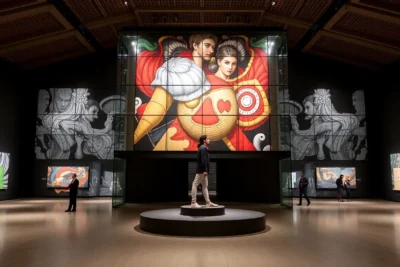
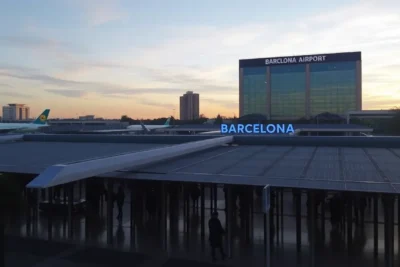

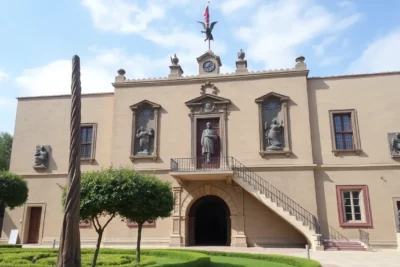
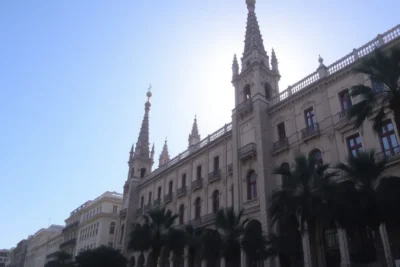
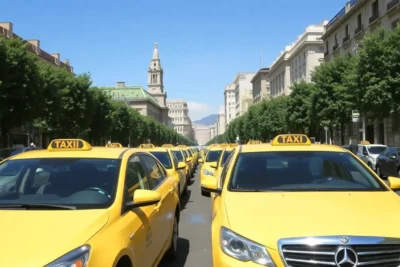
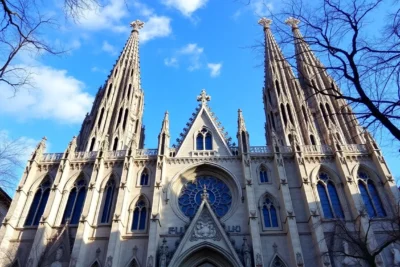
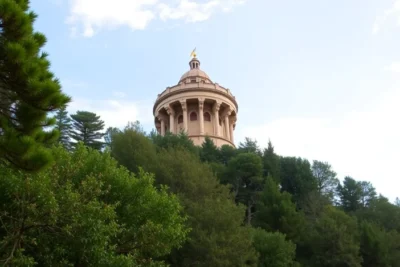
Read more!